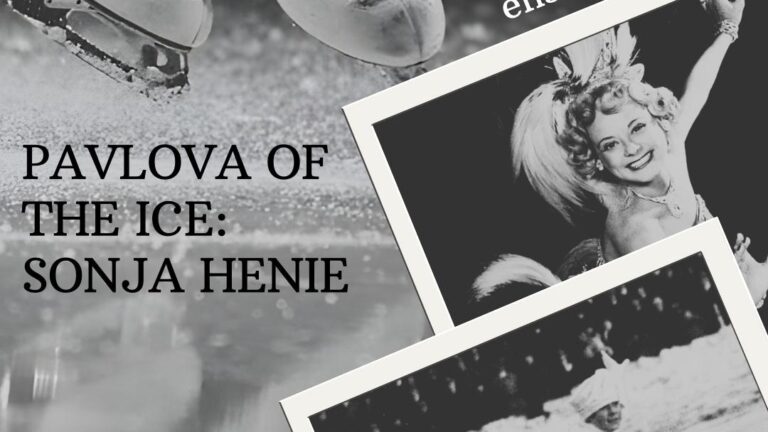Known to many as the greatest figure skater of all time, Sonja Henie is a powerful figure who has shaped the world of women’s figure skating. Born on April 9, 1912 in Oslo, Norway; Sonja was raised in a wealthy family and was encouraged to do sports like tennis, ballet, and skating at an early age. She started skating when she was just 6 years old. She excelled at skating quickly, demonstrating a natural talent and a fierce determination that would characterize her skating career. She won her first Norwegian national championship at the age of 10 and went on to make her Olympic debut at the first Olympic Winter Games in Chamonix in 1924, when she was 11, marking the beginning of a remarkable journey.
Sonja made history in 1927 when she became the youngest skater to win the World Figure Skating Championships, a title she would hold for an unprecedented ten consecutive years. She built a reputation on the international stage, becoming a symbol of excellence in her sport. Henie’s remarkable improvement eventually led to her placing second in the World Championships in 1926, and in 1928 she won her first gold medal at the St. Moritz Winter Games with the votes of six out of seven judges. But Sonja didn’t stop there. In 1932, she repeated her victory, this time winning over the judges unanimously, earning her second Olympic gold medal. Four years later, she won her third and final Olympic gold medal at the 1936 Garmisch-Partenkirchen Winter Games. The next week, 23-year-old Sonja Henie won her tenth World Championship in a row, setting an unbelievable record that is yet to be broken. In total, her medal record consists of Norwegian national championships from 1922 to 1934, six European titles (1931–1936), ten world titles (1927–36), and three gold medals in the Winter Olympic Games of 1928, 1932, and 1936.
Sonja’s popularity grew quickly as she turned into an international star and an idol for figure skating fans all over the world. Her innovative style and extraordinary athleticism were revolutionary in the world of figure skating, reconstructing the standards for grace, precision, and artistry on the ice. With every jump, spin, and footwork combination, she captivated audiences and won the hearts of viewers around the world. Her unique incorporation of ballet into her skating techniques helped her develop a style that would earn her the nickname “Pavlova of the Ice,” after the Russian ballerina Anna Pavlova. Influenced by Pavlova and coached by Swedish Olympic medalist Gillis Grafström, she brought new color and spirit to previously lifeless and predictable exercises and combinations. Her ability to spin was outstanding; she incorporated 19 different spins into her programs and could spin nearly 80 revolutions. She was also the first woman figure skater to wear short skirts above the knee.
After retiring from her career as a competitive skater, Sonja went on to pursue a career in acting. In 1936, her father financed an extravagant ice show in Hollywood, and Sonja, quickly catching the eye of directors, signed her first contract. With that, she transitioned from competitive skating to a successful career as an actress in Hollywood. She starred in many shows and musicals, including box office hits such as “One in a Million” and “Sun Valley Serenade.” She often choreographed her own ice-skating routines in these films and quickly rose to success as audiences fell for her mesmerizing performances once again. By 1939, Sonja Henie was one of the highest-paid actresses in Hollywood and had undoubtedly become a cultural icon.
Throughout her life, Sonja remained dedicated to her craft, pushing the boundaries of what was possible on the ice and inspiring generations of skaters to follow in her footsteps. Her legacy continues to resonate in the world of figure skating, where fans remember her not only as a champion athlete but also as an inspiring artist who transformed the sport forever. Sonja Henie passed away on October 12, 1969, but her impact on figure skating and popular culture endures to this day.





